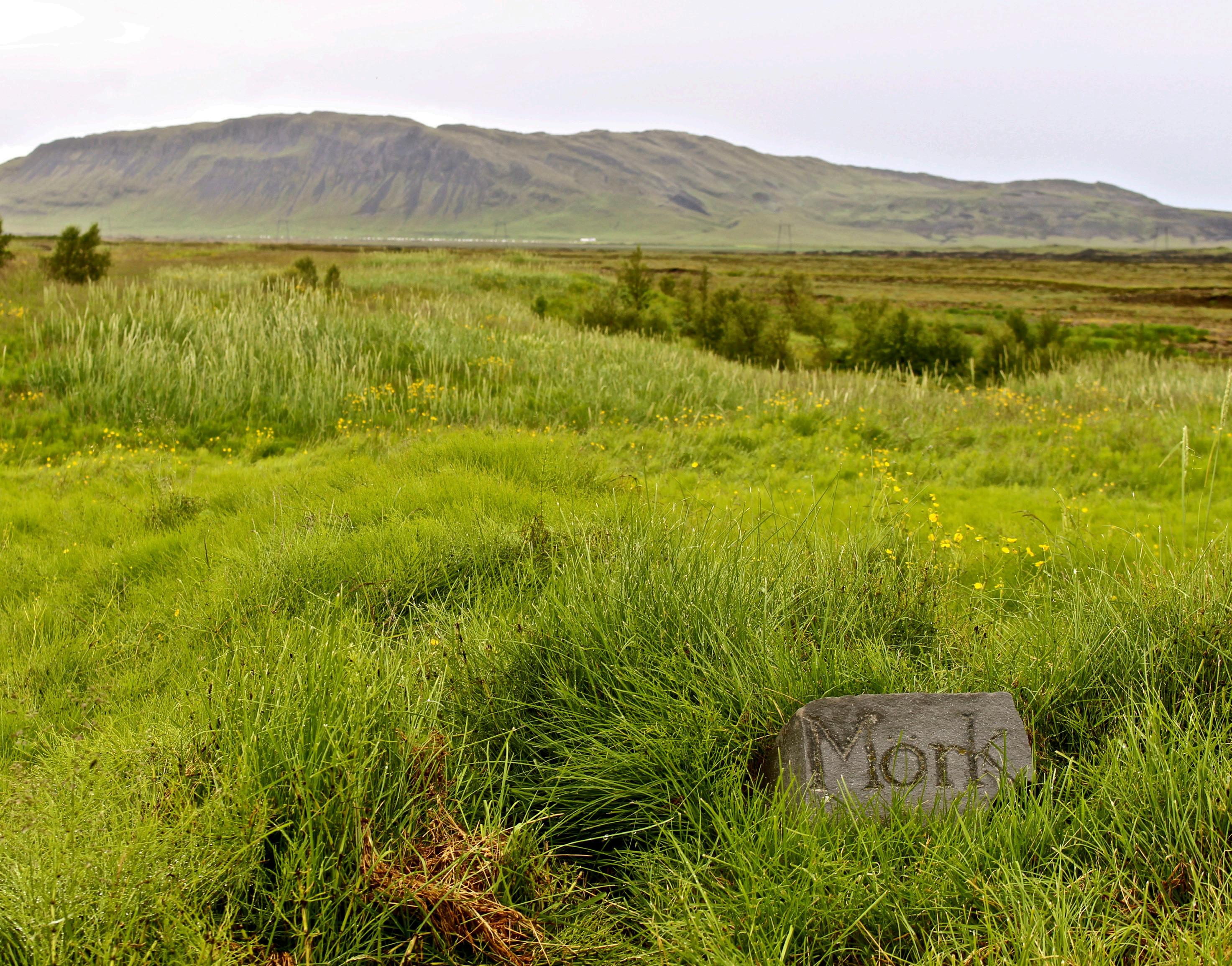
5 minute read
Skarðssel við Þjórsá
from Thraedir_a_landi
by ferdalag
Fyrirhugað lónstæði vegna Hvammsvirkjunar. Tóftir Skarðssels við Þjórsá sumarið 2005, áður en fornleyfafræðingar unnu sínar rannsóknir.

Advertisement

Fyrirhugað lónstæði vegna Hvammsvirkjunar. Ekki fékst leyfi landeiganda til að setja þar niður sögutöflu
HÖSKULDUR AND ARNDÍS MOVE THE FARM In spring 1894, Höskuldur Jónsson and Arndís Magnúsdóttir, his wife, had completed the move of their farm Skarðssel to Þjórsá, from its historic site in Bæjarnes, north of the mountain Skarðsfjall. There their water well had disappeared under sand. It was not a long way to go between the old and the new place but conditions were much better there. A site was chosen for the new farm on the riverbank.
THE WATER AND THE LAND Their son Finnbogi says in his memoires “… There was no sand drift there, a decent place for a field, good pasture and water close by in the river and the moving of the farm and stables was completed and fairly well inhabitable by the time it was time to bring in the hay in 1894 …” Þjórsá fans out but rapids and currents form where it narrows by over-grown islands. On the banks of the river, the family had what was most important, the life-giving water. Views are beautiful and expansive as in the old Skarðssel, although the home mountain partially obstructs vision of the mountain ring, the frame that graces this country. Hekla reigns majestic in the east, Búrfell further up and beyond the river Hagafjall and the farms in Eystrihreppur.
THEIR CHILDREN IN SPRING 1894 There were four siblings at home in Skarðssel in spring 1894: Ragnhildur fourteen, Kjartan fifteen, Sigríður the younger 19, who worked for her parents. Finnbogi, 23, had just come home from a winter fishing season in Grindavík after many days walking from there and delays by the big rivers. Three of Höskuldur and Arndís´ children lived elsewhere: Guðný, the youngest child, thirteen, was fostered by Helga Árnadóttir in Flagbjarnarholt. Jón, the oldest of the siblings, 31, was a farm hand at an unnamed farm. Sigríður the older was in her thirtieth year, housewife at Ásar in Eystrihreppur, married to Guðmundur Þormóðsson, farmer there. They had two daughters, María two years old and Guðríður in her first year.
SENT AWAY FROM HOME In autumn 1894, Kjartan was hired as a farm hand by his uncle Guðni Jónsson in Skarð, who had just taken over the farm there. It was common that the children of poor farmers were sent, immediately after confirmation, to other farms as labourers. But Kjartan was angry and hurt about having to leave the family and the new home by Þjórsá and to leave the small play farm he and Ragnhildur had made together in this beautiful place, in the field by the farm. The next spring, Ragnhildur was sent west across Þjórsá, as a worker, to Eystrihreppur. She was bored there and had a profound desire to return home. She heeded good advice from a boy on the next farm, she stopped eating and this worked because after a few days she was sent home. But soon she was taken across the river again.
SUÐURLANDSSKJÁLFTI 1896 Finnbogi says in his memoirs “… It was at about 11 o´clock at night on the 25th of August 1896, that I along with my father was finishing stacking hay in the garden, when we felt as if the ground was upending itself from the east. And all of a sudden the turf started crawling from the top of the hay and after the biggest commotion had come to an end, we ran to the doors of the farm and there were my mother and sister – there was nobody else on the farm – breaking out through rocks and rafters all jumbled up and it was nothing short of a miracle that they got out unhurt. Next we tended to the cows which were tied in the cowshed, they were still standing by the support columns holding the roof and keeping it from pinning them down but we could not have saved them had we come much later. In the morning of the next day, at going on for ten o´clock, there was another similar commotion, which can be said to have razed to the ground all that the previous one had left half-standing. …” Most farms in Landsveit fell in the quake but the churches survived and it became evident that timber houses could take earthquakes better than turf houses. Weather was singularly good that autumn. “… I do not remember as long a period of good weather at that time of year as that time. There were no tents, except on the odd farm and in some places people made do with sleeping between haystacks at night …” (F.H.) People helped each other with mending and restoring and a workforce of people came from Skaftafell County. “ … because they got away without damage that time from the catastrophe …” (F.H.) Money was collected both in Iceland and abroad and most farms were rebuilt in the area of the earthquake, including the farm at Skarðssel. Höskuldur and Arndís lived on there for the next two years.
FROM SKARÐSSEL TO SKARFANES 1898 Finnbogi decided to become a farmer and purchased the farm Skarfanes, then deserted. The farm is high up in Landsveit, next farm to Ósgröf. Finnbogi began farming there in spring 1898 and his parents, Höskuldur and Arndís moved there with him, as did his sister Sigríður the younger.

Ef af Hvammsvirkjun verður þá munu eyjar Þjórsár og tóftir Skarðssels hverfa undir vatn. Myndin var tekin sumarið 2016, eftir að fornleyfafræðingar höfðu unnið þar sínar rannsóknir. Eyjarnar ...? og Hagaey í Þjórsá og bæjirnir Fossnes og Hagi handan ár.









